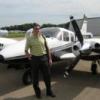
Sign in to follow this
Followers
0

General Route Pre-Planning Questions
By
Bman2006, in PMDG 737NGX | 737NGXu


By
Bman2006, in PMDG 737NGX | 737NGXu